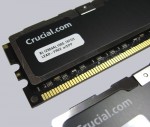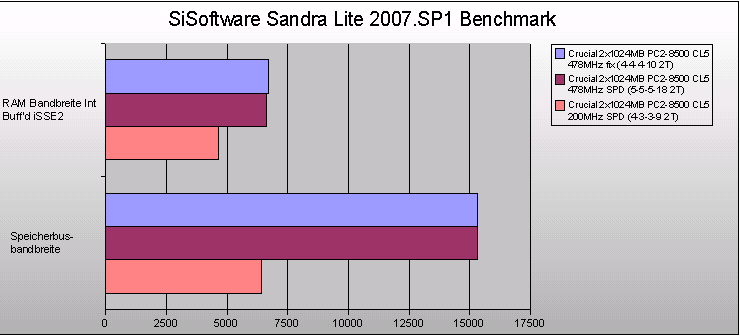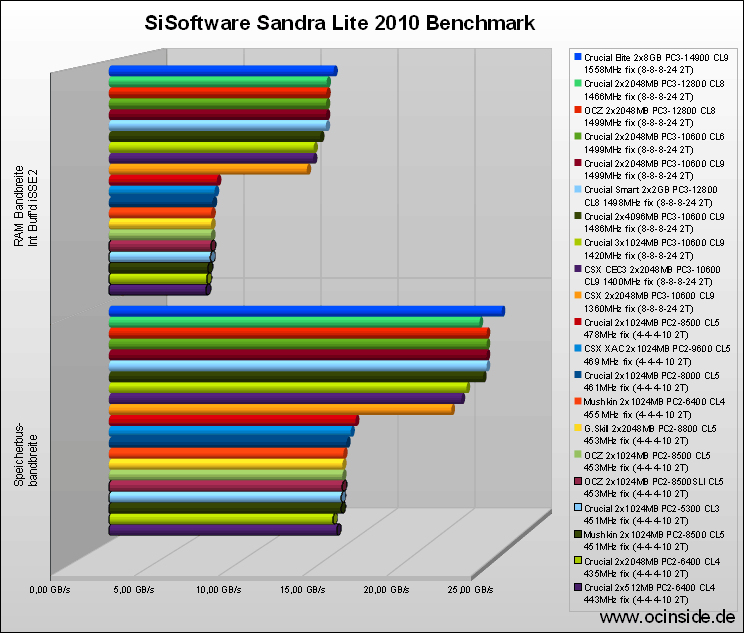
Let us begin with the most important part of the test report, because the optics and packing is of course rather secondary and the highest possible stable performance is the most important factor. CPU on different frequencies depending on the reference clock for the different memory benchmarks. Furthermore the memory modules were tested on another reference board (Foxconn C51XEM2AA) to test the high frequency with higher voltages. The multiplier adjustment remains on 9x with all frequencies, because an adjustment for the CPU in half multiplier steps would be too inaccurate to get nearly the same CPU frequency for all tests. Microsoft Windows XP Professional SP2 is used as the operating system. The stability was examined with the software Memtest86
and SiSoftware Sandra Lite 2007.SP1 program is used for all benchmarks, since it offers extensive adjustments and a fast result comparison. BTW. the latest SiSoft Sandra 2007 version is now available on our download server and can be downloaded much faster and very easily – ALL benchmarks are also included in the free Lite version.
But let us continue with the review … First the maximum possible frequency of the memory module was determined. The memory frequency was increased in small steps with a fixed memory timing of 4-4-4-10 2T and default memory voltage, as long as the detailed memory test with Memtest86 runs without any errors. This quite long testing time ensured that this frequency works really stable with these modules.
The highest possible frequency with 4-4-4-10 (Tcl Trcd Tras Trp) timings was stable with fantastic 478 MHz !
Of course it’s possible to run much higher frequencies with increased voltages or lower timings, because the frequency values and timings depends directly from each other.
Officially Crucial specify the voltage of 2.20 Volt without loosing the lifetime warranty and whereby the default DDR2 memory voltage is 1.80 Volt. In the test the modules were stable with 2.20 V and timings of 4-4-4-10 up to 522 MHz (DDR2-1044) and with SPD timings of 5-5-5-18 it was possible to reach up to 568 MHz (DDR2-1137 MHz). This isn’t possible on all motherboards, because on the one hand it’s necessary that these high clock rates are supported by the motherboard and on the other hand it’s absolutely necessary to have the high memory voltage (Vmem). For the test I’ve additionally used a slightly modified reference board (Foxconn C51XEM2AA) to get this stable result.
This highest possible frequency was compared with two settings. On the one hand 478 MHz with SPD values (these are programmed in the SPD IC by the manufacturer), and on the other hand 200 MHz (x2) with SPD timing values.
By the way, the “Memory Bus Range” is no benchmark value, but this value is quite simple to calculate by the frequency and is useful for a benchmark comparison.
Here’re the benchmark results:
| Frequency | Timing | RAM Range Int Buff’d iSSE2 | Memory bus range |
| 478 MHz | fix (4-4-4-10 2T) | 6704 MB/s | 15296 MB/s |
| 478 MHz | SPD (5-5-5-18 2T) | 6620 MB/s | 15296 MB/s |
| 200 MHz | SPD (4-3-3-9 2T) | 4650 MB/s | 6432 MB/s |
Here’s a diagram of the benchmark values:

Here is a direct benchmark result comparison of some DDR2 and DDR memory modules:

The Crucial Ballistix Tracer PC2-8500 CL5 memory modules reaches with default Vmem clearly the top of all tested memory modules and even beat their own Ballistix PC2-8000 modules. The frequency of 461 MHz was reached with the Athlon 64 3000 CPU on 9x 265 MHz reference clock = 2385 MHz and fast 4-4-4-10 2T timings, whereby it’s of course possible to increase the frequency with slower timings. If the motherboard doesn’t allow such a high Vmem (memory voltage), nevertheless good OC results can be achieved. Whereby the results can be strongly improved above approximately 2.20 V and would be thus optimal.

